In their December 1893 issue, Cosmopolitan magazine published “A New World Fable” by Hjalmar Hjorth Boyesen (1848–1895), professor of Germanic languages of Columbia University. He describes the 1893 World’s Fair as a “wealth of achievement” that promises to be “an elevating influence which will endure beyond the present generation.” Upon entering the fairgrounds from the lake side, Boyesen describes the “strange familiarity” of the White City’s neoclassical style and then offers a critique of select foreign and state buildings and some of the great exhibit halls. His xenophobic response to the exhibits about the Ancestral Pueblo and Peruvian peoples is a somber reminder of contemporary ethnocentric views.
A New World Fable
By Hjalmar Hjorth Boyesen
The flashing into vision of the White City by the Lake, and its sudden extinction, is one of the most startling incidents which the American continent has witnessed. It furnishes exquisite material for the myth-making fancy. What a noble legend the Greeks would have made of it! Men, they would have said, in the pride of achievement, rebelled against the immortal gods, as the Titans did of old, and refused to worship them. “Behold,” they cried, “call we not, of our own wit and strength, rival your works—nay, surpass them?” So they toiled and moiled, by day and by night, intending to build a wondrous city, which was to make Babylon, Nineveh and Athens pale into insignificance. Thither all the nations of the earth were to bring their choicest works—the highest evidences of their deftness, wit and skill. All the glorious products of loom and forge, of brain and brawn, of might and cunning. were to be heaped up in the White City by the much-resounding lake. Inflated in spirit at the grandeur of this thought, the peoples burst into a pæan of praise, saying: “Behold, we are even as gods; great is man, wonderful are his works!”
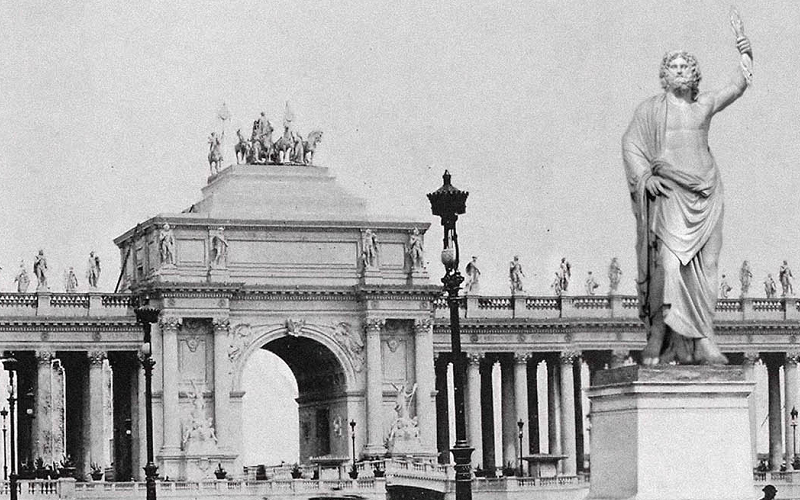
Imagining Zeus in the White City.
But the sounds of this song rose to heaven and smote the ears of the immortals, as they were seated in council on the top of Olympus. “What is this,” they cried in wrath, “which the dwellers upon earth have done? Let us send Eris, the goddess of strife, among them, to disturb their councils and bring confusion to their deeds.” And Eris, borrowing the swift-winged sandals of Mercury, descended from the purple skies, and, wrapped in a viewless cloud, stole into the council-room of the lily-armed Board of Lady Managers. Straightway a murmur was heard, which gathered volume and grew into a harsh commingling of many voices. All the lily-armed ones rose and talked aloud, with angry gesturing. Each deposed the other from office; some hurled forth accusations, and some brandished their silken-fringed sun-shades threateningly in their neighbors’ faces. Then Eris laughed aloud with joy, and, slipping out, betook herself to the council-hall of the men. No sooner had she entered and hovered unseen over the chieftains, than a roar of dissension broke forth: fists were clenched, wrathful voices wrestled in fierce concourse, and confusion reigned galore. Then Eris clapped her hands with delight, and, returning to Olympus, announced that her mission had been accomplished.
But as the moons passed, the men forgot their wrath, and masters of persuasive speech, whose words dropped from their lips sweeter than honey, soothed their passions and fired their hearts anew with noble endeavor. And they toiled again right valiantly, by night and by day; and behold! the city of wonders arose and hung like a radiant vision upon the horizon over the much-resounding lake. Then, again, the high chant of triumph pierced the brazen skies and besieged the ears of the jealous immortals. “Let us descend from the crags of Olympus,” they said, “and behold what the dwellers by the much-resounding lake have fashioned.”
And cloud-compelling Zeus, with all the radiant throng of gods and goddesses, descended, wrapt in a fragrant gloom, to the White City. And they came as cometh the night. Sore they marveled at that which they beheld. Hephaistos, when he saw the huge revolving wheel, struck at it, hot with ire, and with his mighty sledge strove to shatter it. But his fury was spent like that of a storm against the deeply-rooted mountain. Ares, mighty of limb, when he stared into the yawning throat of the black-mouthed cannon, hurled in disgust his sword into the lake; and swift-sandaled Hermes, when he heard the roar of the snorting locomotives and saw the starry light flash, with bright-hued rays, swifter than thought, along threads of steel, grasped his head between his rosy palms and trembled like an aspen leaf. Phœbus Apollo, when the music of dire fully commingled strains smote his ear from the Midway Street of the Nations, groaned aloud; and when, haply to escape from the excruciating tumult, he rushed into the Hall of Beauty, he groaned still louder and fled, horror-stricken. But when the torch of day was quenched, the gods looked in vain for the soft veil of darkness to descend. Myriad stars suddenly flashed into view along the water’s edge and on the lofty temples, glowing strangely with a pure white light. A great glare arose, pouring its radiance into the dark-blue canopy of the sky. And the moon, like a pallid ghost, drifted along the edge of the horizon, and, seeing that her services were no longer needed, stole out of sight.
Then cloud-compelling Zeus shook his ambrosian locks, and terrible was he to behold. “Ye gods and goddesses,” he cried, “hear! The dwellers upon earth have rebelled against us. They have blotted out the soft and gentle night; they have enkindled suns and moons and stars of their own: they have erected temples for the worship of strange gods, and, have reversed the order of the world which we had decreed. Therefore will I bring confusion upon them and destroy the cyclopean works which they have builded.”
Then, in the twinkling of an eye, heaven and earth were drenched in darkness; the thunderbolt flew abroad and, crashing, smote the towers and domes of the White City; the lightning cut deep rifts in the roof of the sky, and Æolus unloosed the storms which, bellowing, rode forth, filling the world with their uproar. But when Aurora rose again from the saffron couch of the famed Tithonus, the White City was gone, and ruin and desolation marked the spot where it had been.
* * * * *
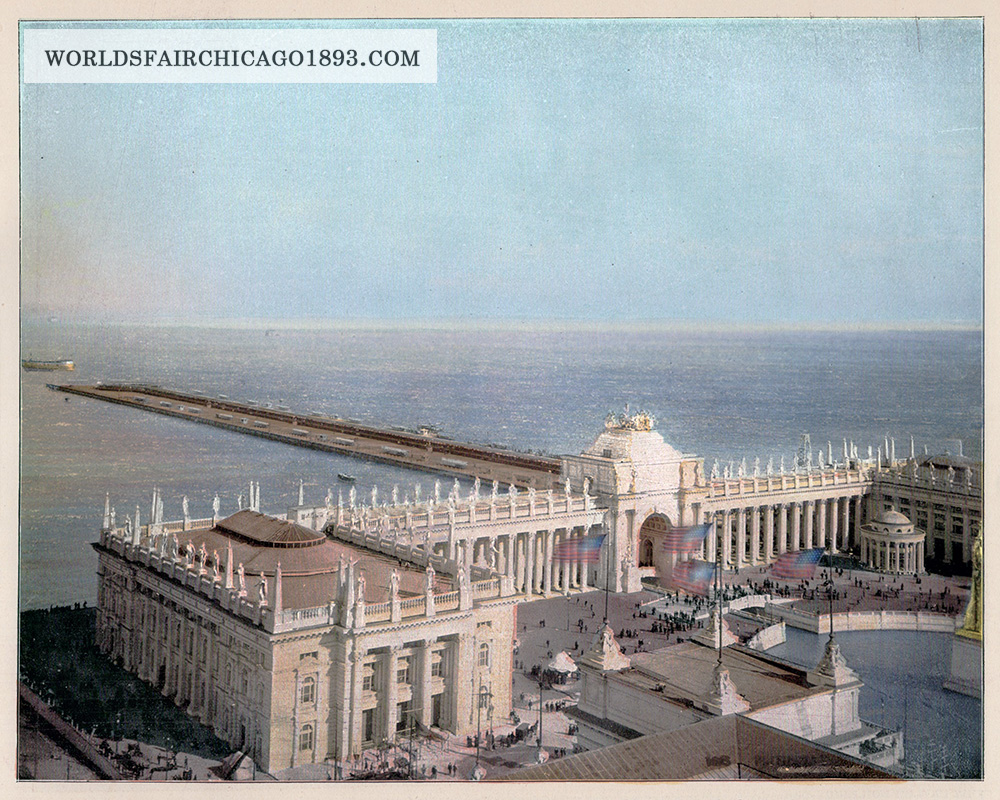
The Music Hall, the Peristyle and the Movable Sidewalk. [Image from Picturesque World’s Fair. W.B. Conkey, 1894.]
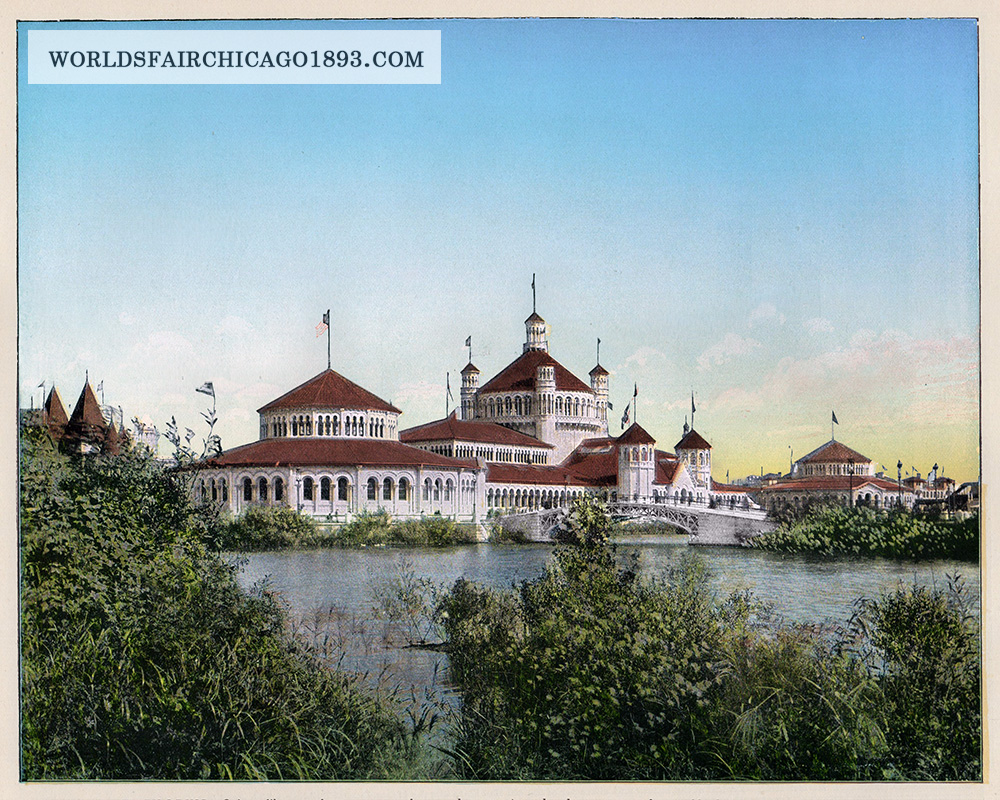
The Fisheries Building. [Image from Picturesque World’s Fair. W.B. Conkey, 1894.]
There was a sunny illumination diffused over the whole magnificent spectacle on the morning when it first challenged my attention. I had come with a pair of critical New York spectacles on my nose, and I was not going to be bamboozled by Chicago swagger into approving of anything which did not commend itself to the enlightened eastern judgment. Truth to tell, I was resolved rigidly to preserve my mental equilibrium, and on my return home to talk about the Fair in a judiciously discriminating and slightly patronizing tone, as it behooved a man who, like the wily Ulysses, had “traveled far and visited the capitals of many nations.” But the very first glimpse of the White City (from the lake) disarmed me. Possibly I am rather impressionable, liable to be taken off my feet by the sight of something truly beautiful. Things grandly and nobly beautiful are, as most of us are aware, extremely rare on this continent—nay, on any continent. Most of us, too, when we were young, dreamed dreams and had glorious visions which in soberer years we dismissed as foolish and incapable of realization. It is only in this way I can account for the fact that the Fair impressed me with a strange familiarity. I felt sure I had seen it before, though I could not tell when or where. That splendid Court of Honor, with its monumental stateliness and simple grandeur—the long, majestic peristyle, with its sculptured figures, reflected in the lagoon, and the great central arch, with its triumphal quadriga—all bore to me some incomprehensible affinity to something I had seen or read or dreamed in the present or in a previous existence. The Statue of the Republic welcoming the nations was, to be sure, distinctly new, and for that reason seemed a trifle out of tune; though I soon managed to fit her into a vacant niche in my memory.
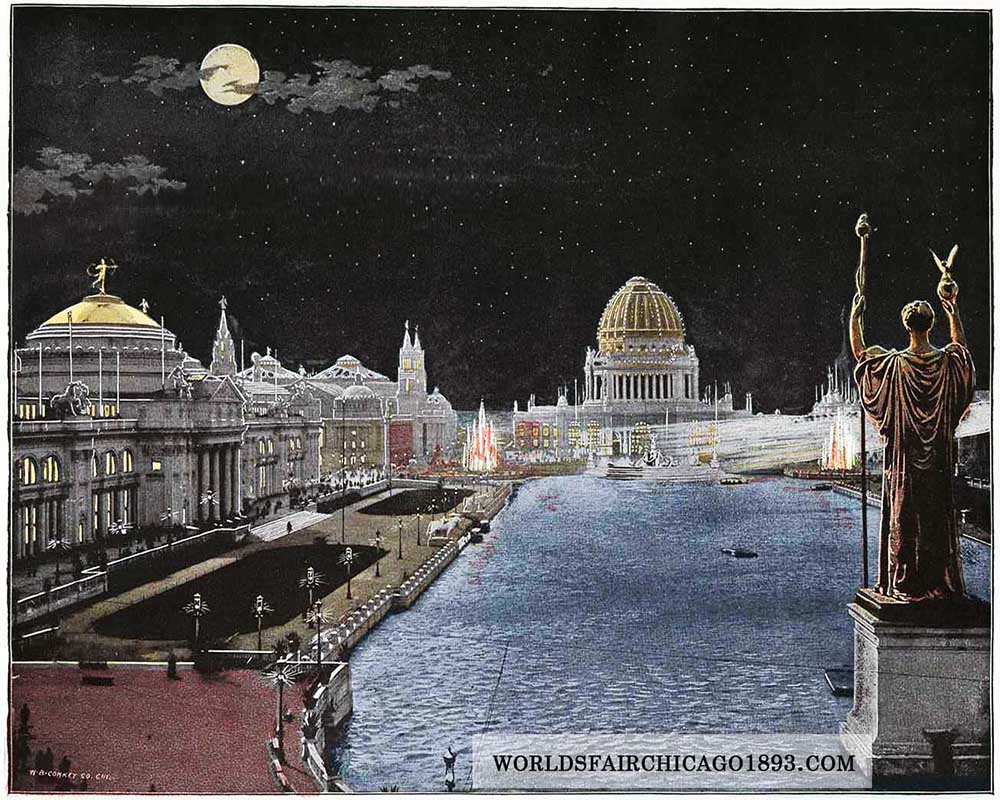
The Court of Honor by Moonlight. [Image from Picturesque World’s Fair. W.B. Conkey, 1894.]
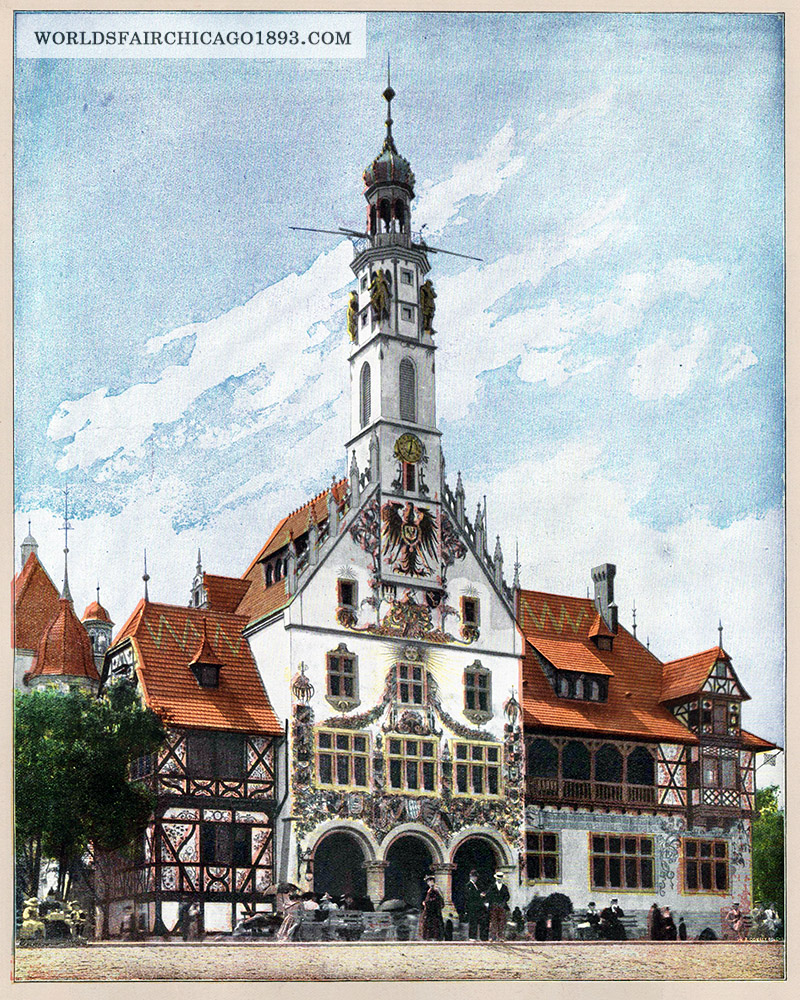
The German Building. [Image from Picturesque World’s Fair. W.B. Conkey, 1894.]
The English building is commonplace and uninteresting, as are also those of Canada and New South Wales; and the only foreign structures which can lay claim to beauty are those of France and India. The latter presents, to my mind, an exquisite combination of richness of decorative detail with purity of design. Brazil is large and pretentious; and, in fact, all the South American buildings show a complete absence of individuality.
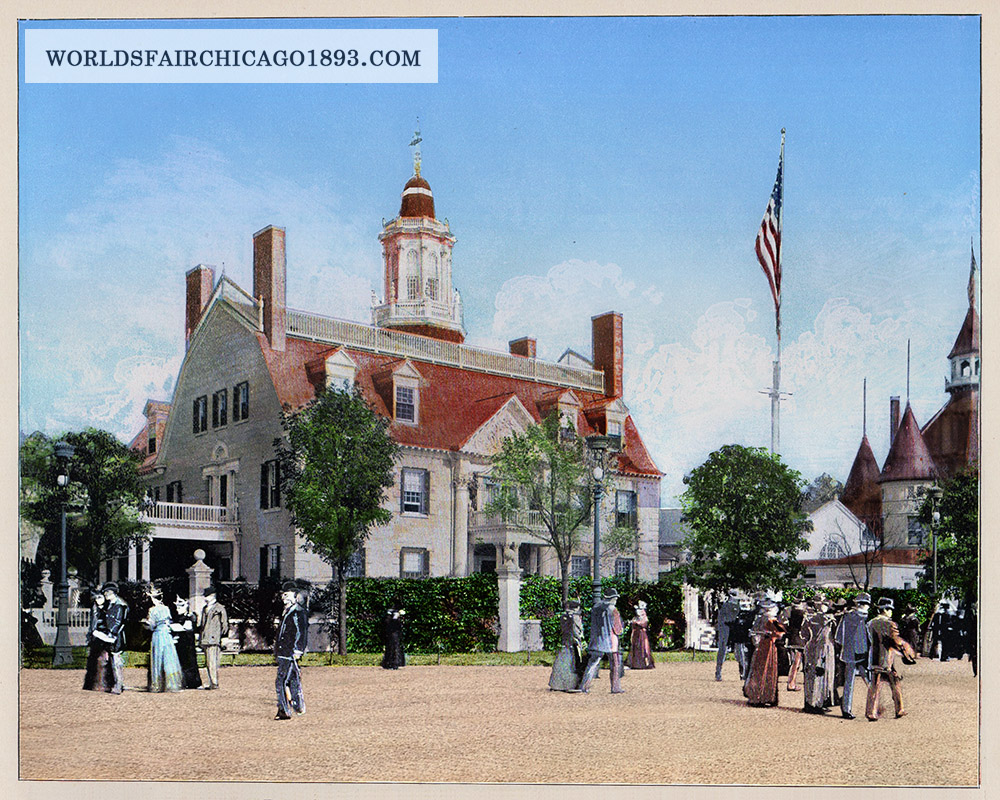
The Massachusetts Building. [Image from Picturesque World’s Fair. W.B. Conkey, 1894.]
The Pennsylvania building, too, is in excellent taste, and presents an historic physiognomy. Inaudible echoes of the American Revolution seem to tremble in the air about it, and the venerable Liberty bell makes us realize how far wrong Dr. Johnson was when he declared patriotism to be the last resort of a scoundrel. Here is a state with a distinct individuality, which has something in her past of which she is justly proud. New York’s part in the Revolution was, indeed, less conspicuous, but yet well worth commemorating. Hamilton, Gouverneur Morris and John Jay were New Yorkers. But in the New York building, what do we find? Absolutely nothing. A big, glaring, featureless hall, with a great deal of gilding, and Governor Flower’s bust on the outside. There is no building in the whole collection at the Fair (unless it be that of Vermont) which is so drearily devoid of interest. Roswell P. Flower—is he the best type we have to show of New York intellect or statesmanship? The other states have not found it necessary to give their temporary executives such a conspicuous publicity, and the inference is inevitable that we must be particularly proud of ours.
Of the other states which make an ambitious exhibit, illustrative of their climate and resources, one of the most notable is that of Washington. Its stuffed animals were capital, and the miniature farm was extremely instructive. It taught me a number of things in regard to agricultural machinery and methods, and impressed me most vividly with the enormous resources of the boundless west. This ocular demonstration most of the other western states failed to make, except in the most rudimentary way, by the sizes of their ears of corn, pumpkins and cabbages. Washington henceforth will mean something definite to me, and the name will call up a vivid mental image, while North and South Dakota are merely vague geographical terms, devoid of any salient feature. California, to be sure, rejoices in a most picturesque distinction of physiognomy and character. Thanks to her novelists and the Spanish strain in her blood, she casts a spell over the imagination, and with her golden profusion of fruit breathes a subtle tropical fragrance. She cuts a most fascinating figure at the Fair, and made me vow in my secret soul to retire thither from all the jarring noises of life and bury myself deep in some idyllic, tropical paradise, where neither the woman nor the serpent could follow me. Unhappily, I had to postpone the date longer than, at present, seems agreeable; but I shall henceforth cherish the dream and be the richer for it.
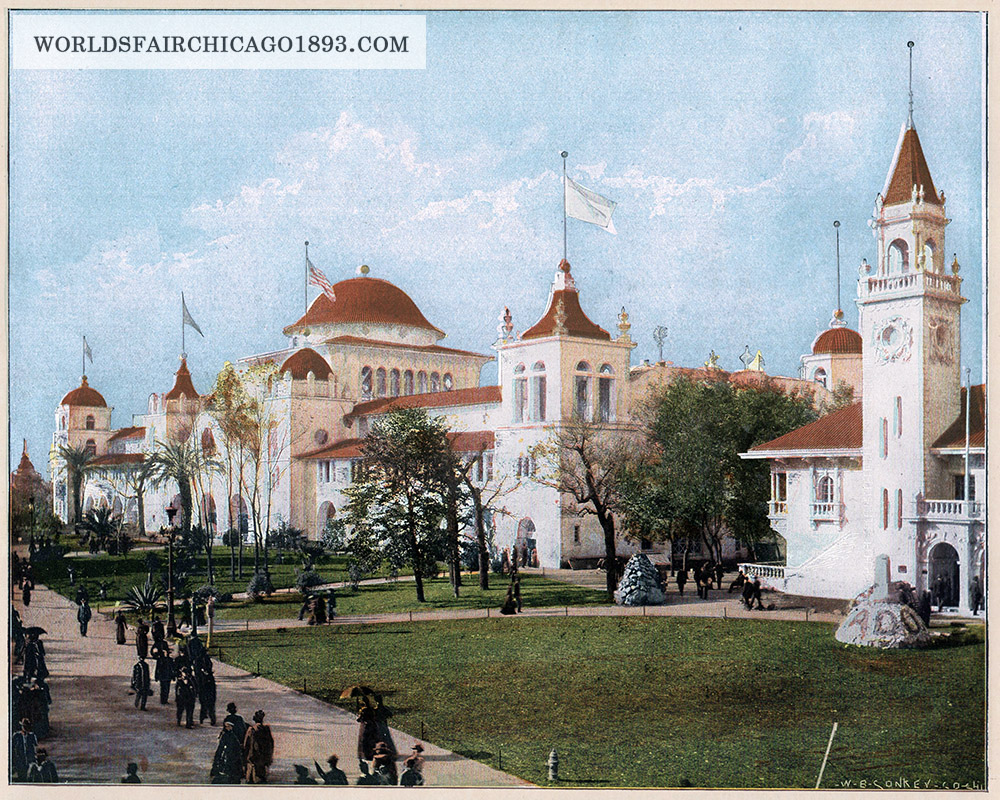
The California Building. [Image from Picturesque World’s Fair. W.B. Conkey, 1894.]
The monastic, Spanish type of the California building naturally suggests the convent La Rabida, which in point of appropriateness overtops everything else at the Fair. The Columbus relics, the primitive charts, the paintings illustrating the principal scenes in the life of the great navigator, furnish just that little, vivifying touch to the fancy which enables it to realize his mental equipment and physical environment like a contemporary. Though I do not know a single mystic incident connected with La Rabida, it looked to me as if every inch of its adobe walls were cobwebbed and ivied with murky legends.
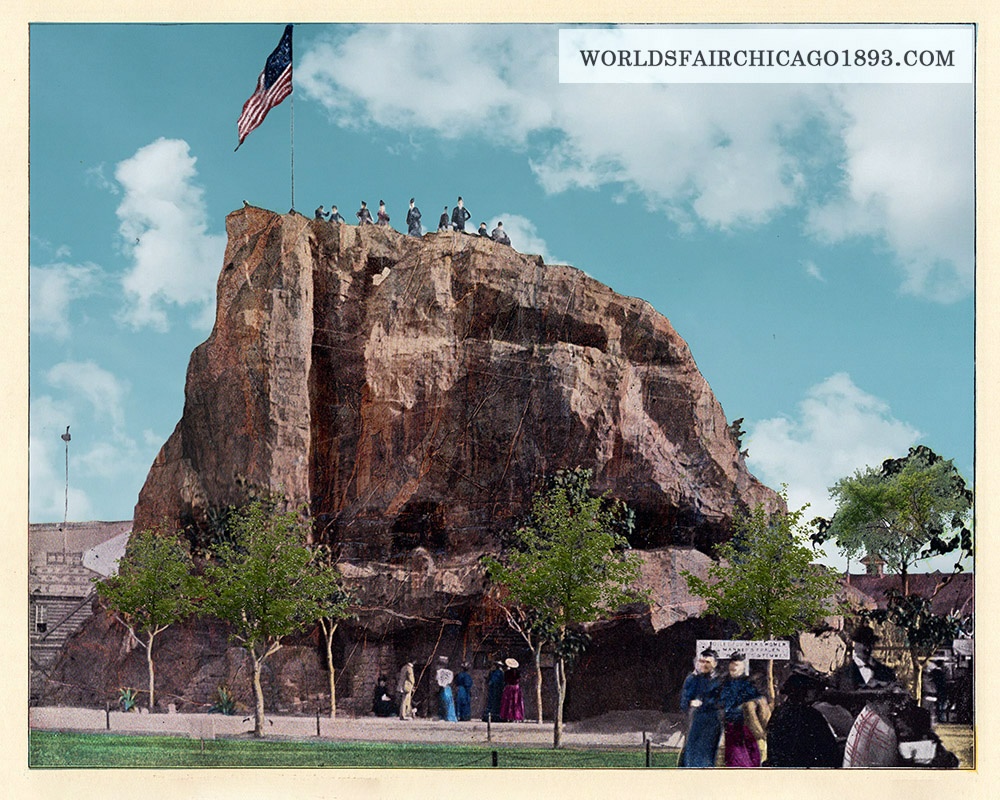
The Cliff Dwellers. [Image from Picturesque World’s Fair. W.B. Conkey, 1894.]
In the immediate vicinity of these prehistoric folk lies, appropriately enough, the Anthropological building, which is architecturally unpretentious, but so crowded with valuable and instructive exhibits that scarcely a year would suffice to exhaust its interest. Those ancient Peruvian cemeteries, whose hideous mummies, swathed and unswathed, sat in ghastly groups, making blood-curdling faces at each other, were unpleasantly suggestive. There was one blackish-brown squatter, in particular. who pursued me for a week in my dreams. His face was screwed up into an expression of heart-rending mirth, with a fascination of horror in it which would have made it a find to E. T. A. Hoffmann or Edgar Allan Poe. However, he, too, had his instructive side, no doubt; or he would not have been there. The indefatigable, I might almost say the alarming, activities of man in hundreds and thousands of directions are here exhibited with a painstaking accuracy and minuteness which fill one with admiration. And what is more, the educational value of the exhibit was greatly heightened by the descriptive labels, the absence of which, in other departments, threw one entirely on the mercy of the official catalogue. And I confess, after two days of conscientious delving in that somewhat puzzling volume, I resolved to be frivolous and enjoy myself, culling only such information as could be had without too much exertion.
I thus learned, incidentally, the awful consequences of tight lacing, physiologically demonstrated by charts; and though I never expect personally to profit by this knowledge, it is a great satisfaction to me to possess it. So, also, the routine of life and the correctionary discipline at the Elmira reformatory will probably never be of any personal importance to me; but, for all that, it is a delightful thing to have been made aware what I have escaped by not going there. The same observation applies to the Philadelphia penitentiary (made famous in Dickens’s “American Notes”), which, in point of vividness and comprehensibility, surpassed all similar models I have seen. I think, after having studied it for an hour, I could successfully pilot any hero of mine through a term of five or ten years, if he should have the misfortune to go to jail. A romantic novelist (whose heroes are notoriously liable to such accidents) ought really to be provided with such a model; and if I had been a romanticist, I should have ordered a facsimile of the present one.
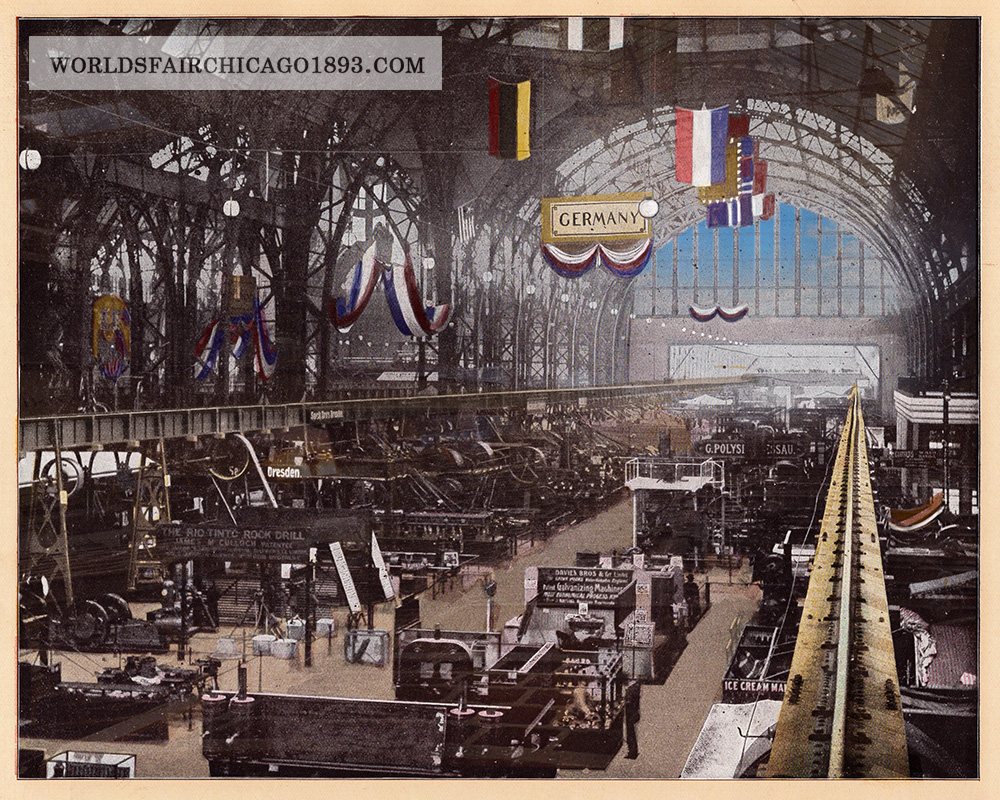
The Interior of Machinery Hall. [Image from Picturesque World’s Fair. W.B. Conkey, 1894.]
In the Manufactures and Liberal Arts building I could profitably have spent a month, if not a year; but, owing to the reputed shortness of human life, I contented myself with four or five visits. Unhappily, the mind soon becomes callous and refuses to receive fresh impressions. It is susceptible only of a dull, faded or blurred image, like that of a negative exposed too long to the light. Though I remember, in a jumbled way, hundreds of exhibits, there were only three things that roused me from that dazed indifference which marked the limit of my capacity for impressions. First, the exhibit of petrified woods from the Yellowstone had that little tang of the fanciful which appealed to my imagination. The beauty of the polished surfaces was so extraordinary—with splendidly fantastic lines and gorgeous splashes of color—that it roused me from my apathy like a bugle note; and the thin flakes, held up against the light, showed landscapes and cloud-pictures of extraordinary boldness, worthy of a Calame or Doré.
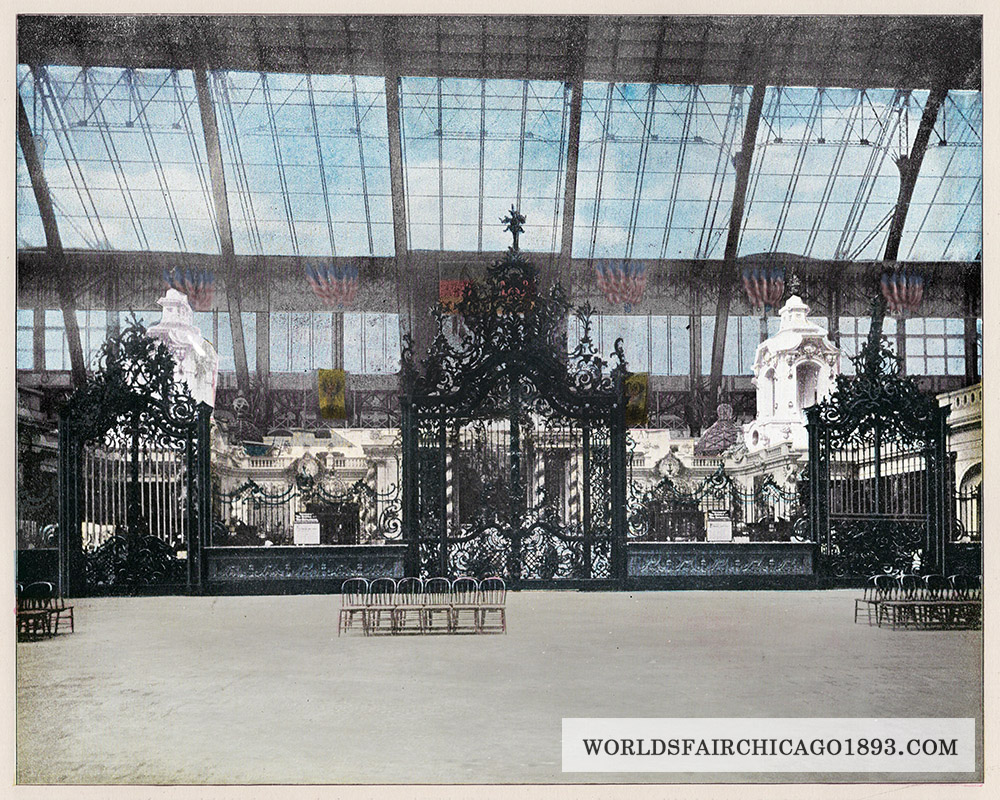
The Iron Gates, German Section. [Image from Picturesque World’s Fair. W.B. Conkey, 1894.]
Of the Fine Arts building, in which I made my most profitable and delightful studies, I shall say nothing; for, as Rudyard Kipling has remarked, that is another story, and it would require a separate article, if not a separate volume to do it justice. The Woman’s exhibit I also cheerfully leave to specialists in that department, pleading complete and abject incompetence. The Midway Plaisance, I admit, tempts me sorely; but here, too, I shall have to exercise self-restraint. It was, in my opinion, by no means the least valuable part of the Fair. How it must have stored the minds of thousands upon thousands of rural visitors with impressions which will and must vastly expand their mental horizon! And what inexhaustible themes of conversation it will supply in thousands of farms and village grocery stores, for years to come! The rural American will be modified by the Fair in manifold ways, and I think, to his advantage. He will be a broader and better informed man, with a wider outlook on life. He will be less provincial, less narrowly parochial and Philistine. I only hope he will not, in his admiration of the buildings at Jackson Park, cover the land with Greek temples which, in their monumental grandeur, are ill adapted for domestic purposes.
The whole beautiful pageant will, as a mere memory, exercise an elevating influence which will endure beyond the present generation. That it should so soon be reduced to a mere memory may, however, cause one a sentimental heartache. But it is, after all, better to have it vanish suddenly, in a blaze of glory, than fall into gradual disrepair and dilapidation. There is no more melancholy spectacle than a festal hall, the morning after the banquet, when the guests have departed and the lights are extinguished.
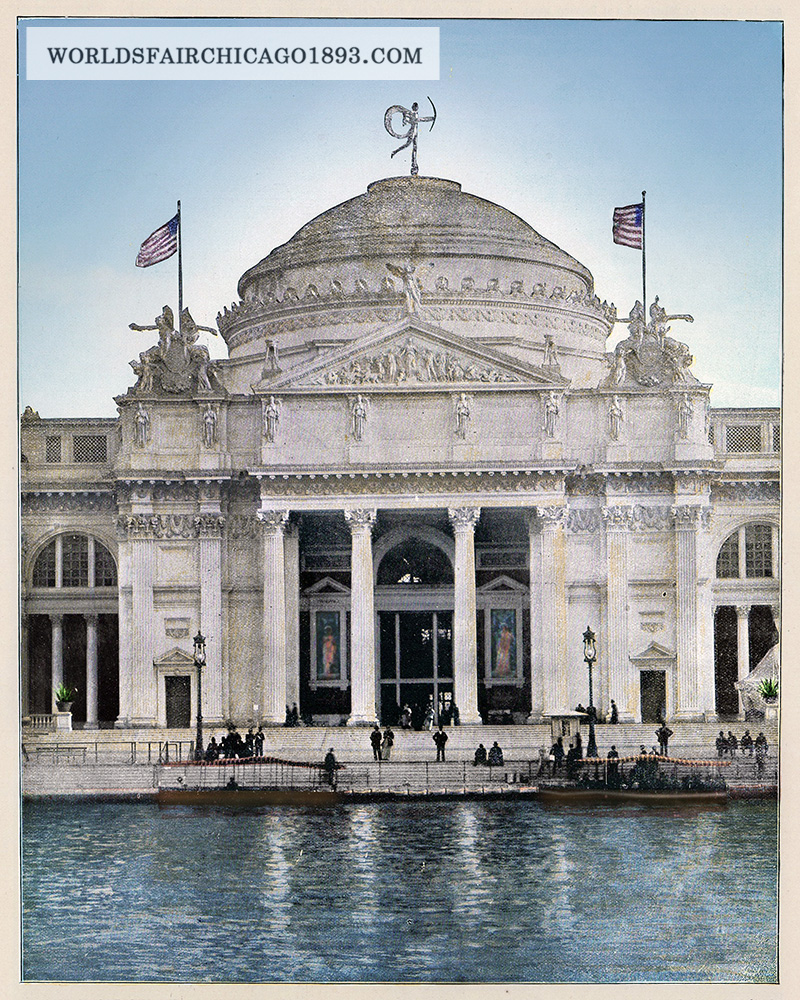
Dome of Agriculture Building. [Image from Picturesque World’s Fair. W.B. Conkey, 1894.]
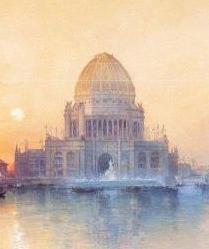
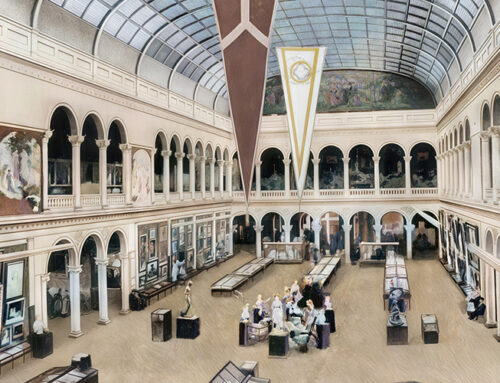
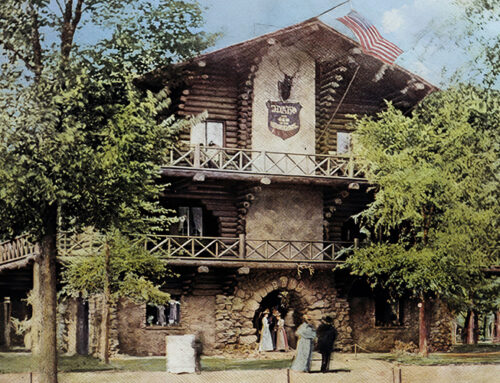
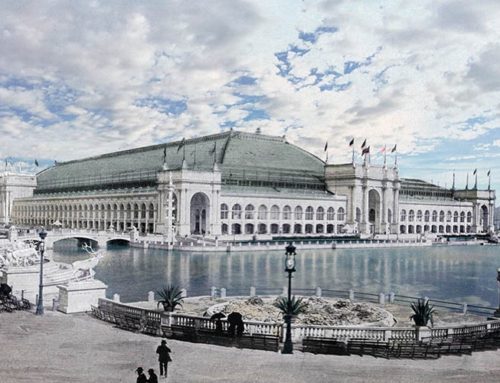
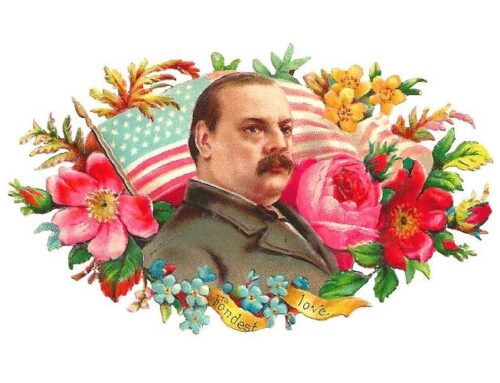
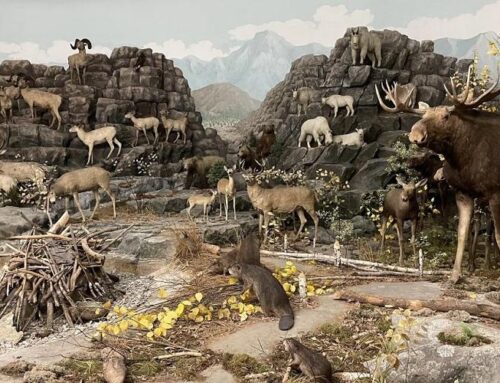
Leave A Comment